The battery system parameters of Lucid Air Dream are very high, with a rated capacity of 118 kWh.
Recently, it has caused some controversy: it takes 134 kWh to charge from 0-100% in testing.
Here are some interesting things to discuss with everyone. This battery actually reflects many problems faced by large battery systems of 110-130 kWh in the future.
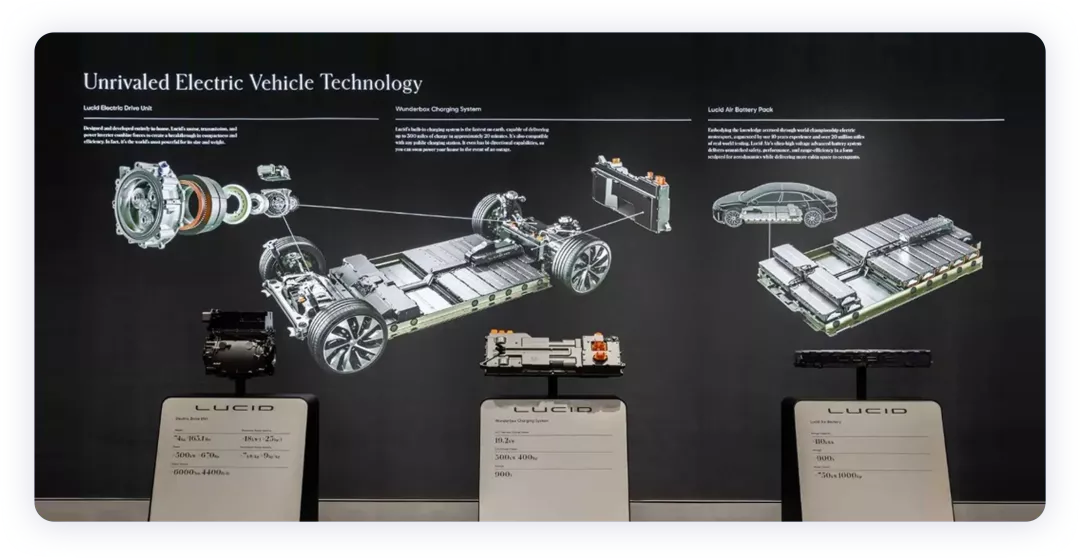
The charging speed and time of Lucid Air Dream
The maximum charging power of this 118 kWh battery can be increased to 300 kW when the SOC is low, from 1%-20% SOC, then the power is about 180 kW at SOC50%, and 90 kW at 80% SOC.
Overall, this power curve is very good for an 800V battery system.
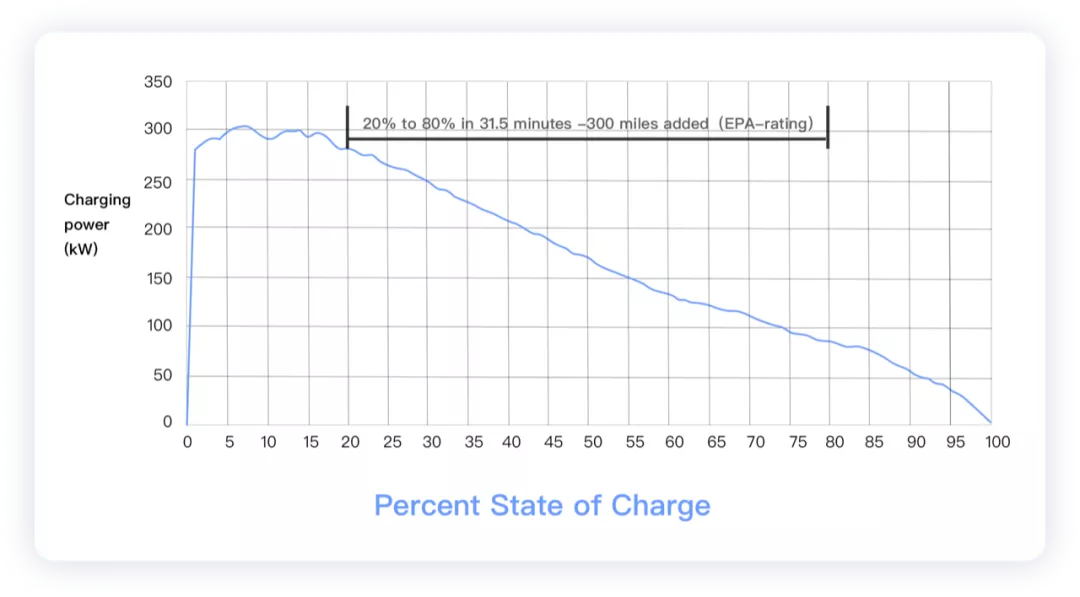
If we decompose according to charging time, such cars are expected to form special usage habits in the future. Since it takes too long to fully charge, the first 100 miles only requires 5.5 minutes, the second 100 miles 6.5 minutes, but the third 100 miles requires 10 minutes, and the fourth 100 miles requires 15 minutes – this charging time increases rapidly.
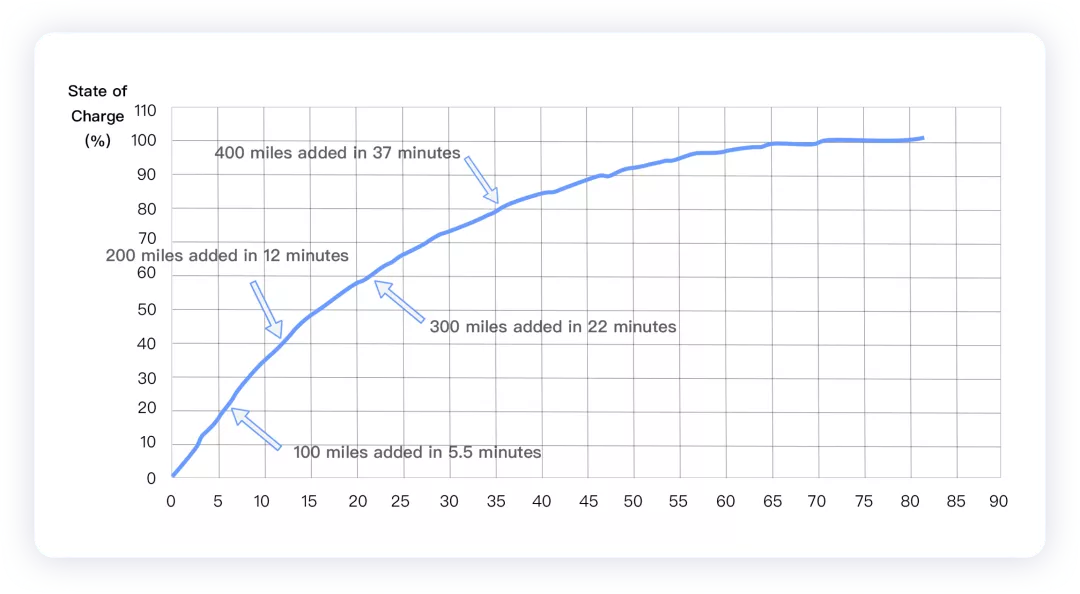
Regarding Electrify America charging 134 kWh for 0-100% charging range, this fact has confused many consumers. As I understand it, where does the 16 kWh of energy dissipate during the entire charging process? In the following links:
● DC charging pile power loss: 3%.
This depends on the power consumption of the cooling system, the efficiency of the DC charging module, and the power consumption of the billing display module throughout the entire process. The estimate adds up to about 3%, which is about 4 kWh.
● Cooling during the charging process: 4%.The following is the English Markdown text with HTML tags preserved, translated from the Chinese Markdown text:
This portion of energy is used to cool the battery during charging. During the charging process, the water cooling system, 12V DCDC, charging cable, busbar, and battery all generate heat.
- Battery efficiency loss: 5%
During high current fast charging, the actual conversion efficiency of the battery is only about 95%. The difference of about 5% between the input energy and the available energy is the energy lost during the charging process of the battery pack, including charging current, internal resistance of the battery cell and other impedances along the entire conduction path, initial cell temperature, other equivalent resistances of the battery pack, etc. The total energy loss is about 6.7 kWh.
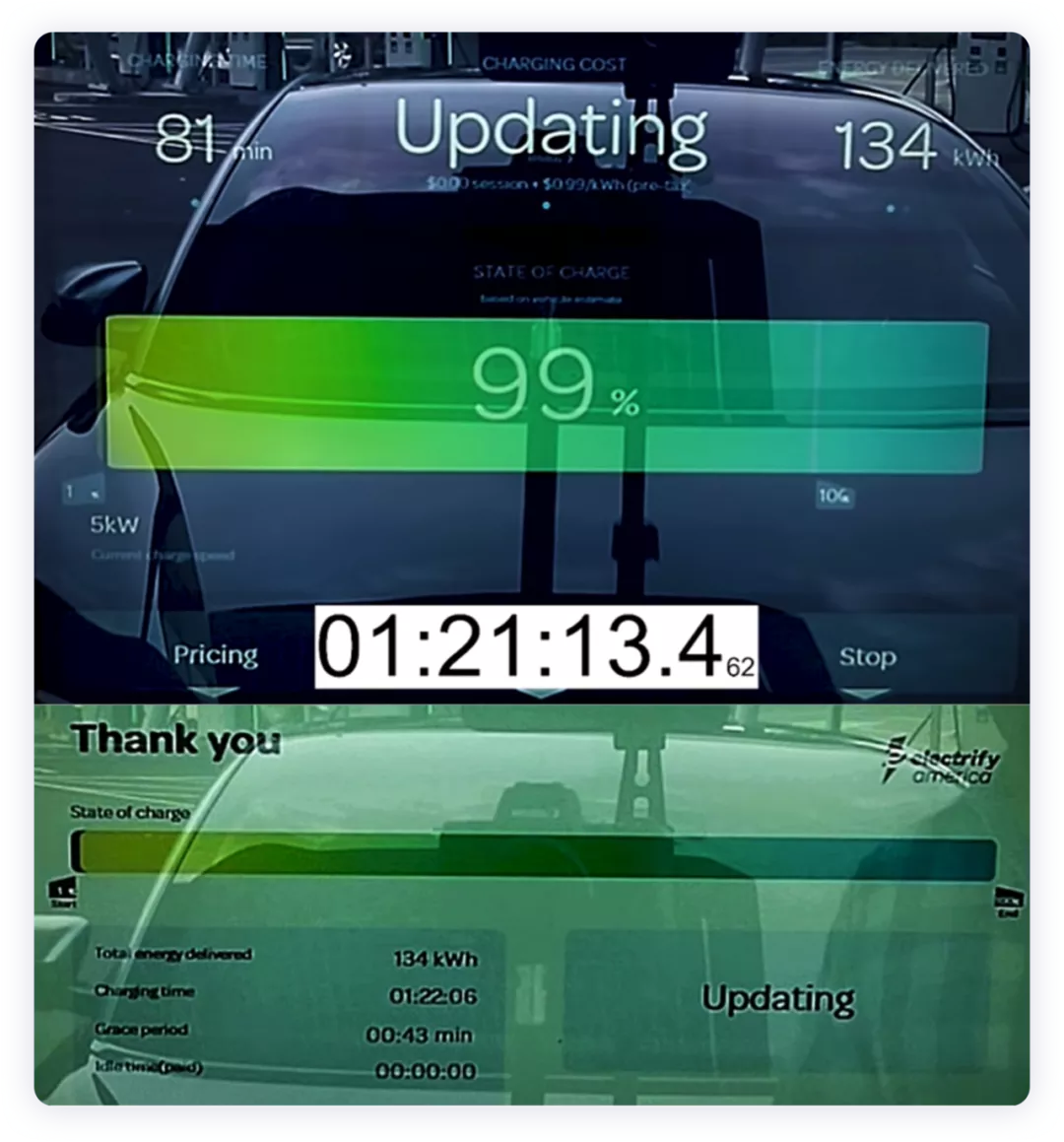
In the test, Taycan equipped with the Performance Plus 94.3 kWh (total energy) battery pack underwent 0% to 100% DC fast charge testing, and the available energy of the battery pack was 83.7 kWh. Electrify America charged 94 kWh during the charging process, which was 10.3 kWh more than the nominal available energy.
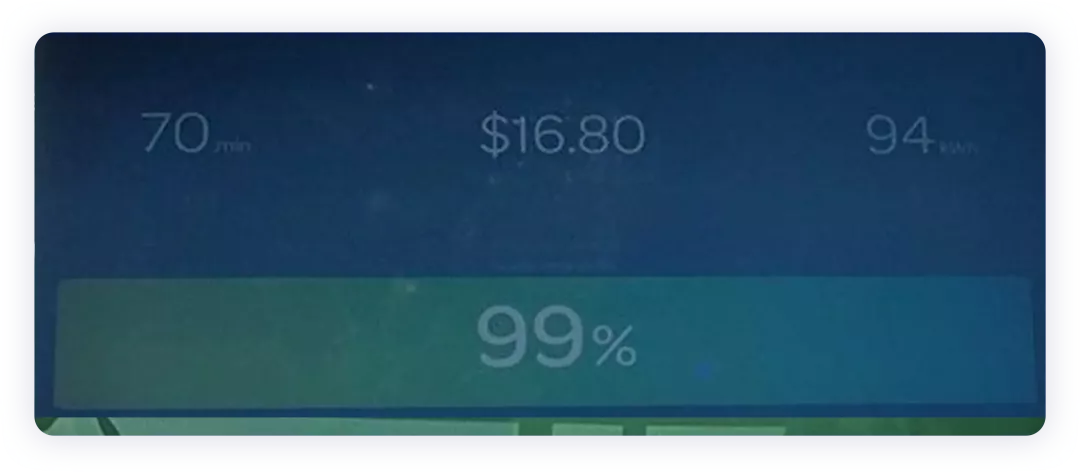
How much energy does the battery really have?
The construction of Lucid’s modules and battery packs was explained at a previous press conference, which I did not follow up on at the time.
In fact, a total of 22 modules were used in this design, with a total of 6,600 2170-type batteries. As shown in the figure below, a single module actually contains 300 21700 batteries, and the configuration specification of the module is 30P10S. It can be seen below that there are 10 bricks, which use a plastic and busbar theme to accommodate the battery cell. Let’s calculate that the low voltage of a single module is about 36.5V, and 22 modules is 803V.
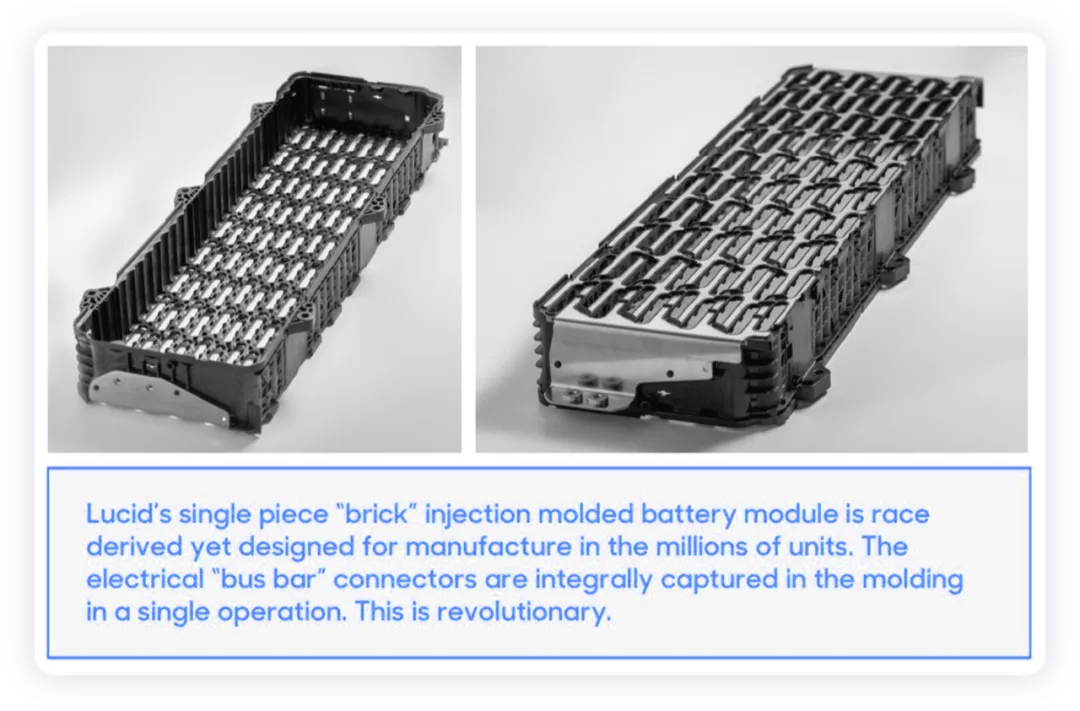
The modules are connected by plug-in circular wires.
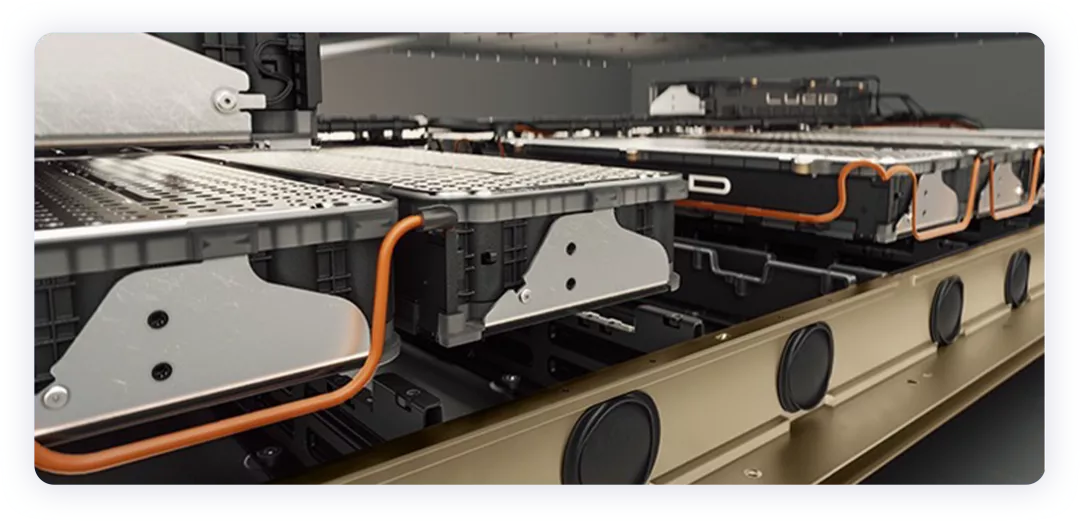 My understanding is that without the use of SiC devices, there would be significant losses in overall efficiency with such a large battery. Therefore, Lucid has also developed SiC MOSFETs to improve driving efficiency. It can be argued that at 100kWh, it is not cost-effective to continue using traditional IGBTs. This also applies to 20kW onboard chargers.
My understanding is that without the use of SiC devices, there would be significant losses in overall efficiency with such a large battery. Therefore, Lucid has also developed SiC MOSFETs to improve driving efficiency. It can be argued that at 100kWh, it is not cost-effective to continue using traditional IGBTs. This also applies to 20kW onboard chargers.
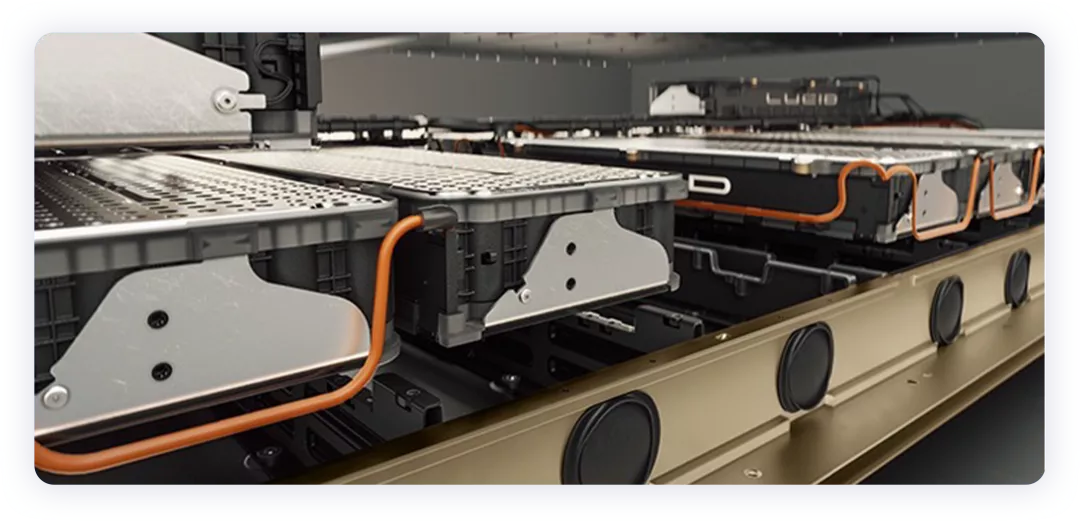
In conclusion, in 2022, we will see a situation in China where 100-120kWh batteries are commonplace, and high-end luxury brands will increase fast charging speeds based on high energy. Products with less than 100kW are not attractive, with at least 200kW and even 300kW products being offered.
This article is a translation by ChatGPT of a Chinese report from 42HOW. If you have any questions about it, please email bd@42how.com.